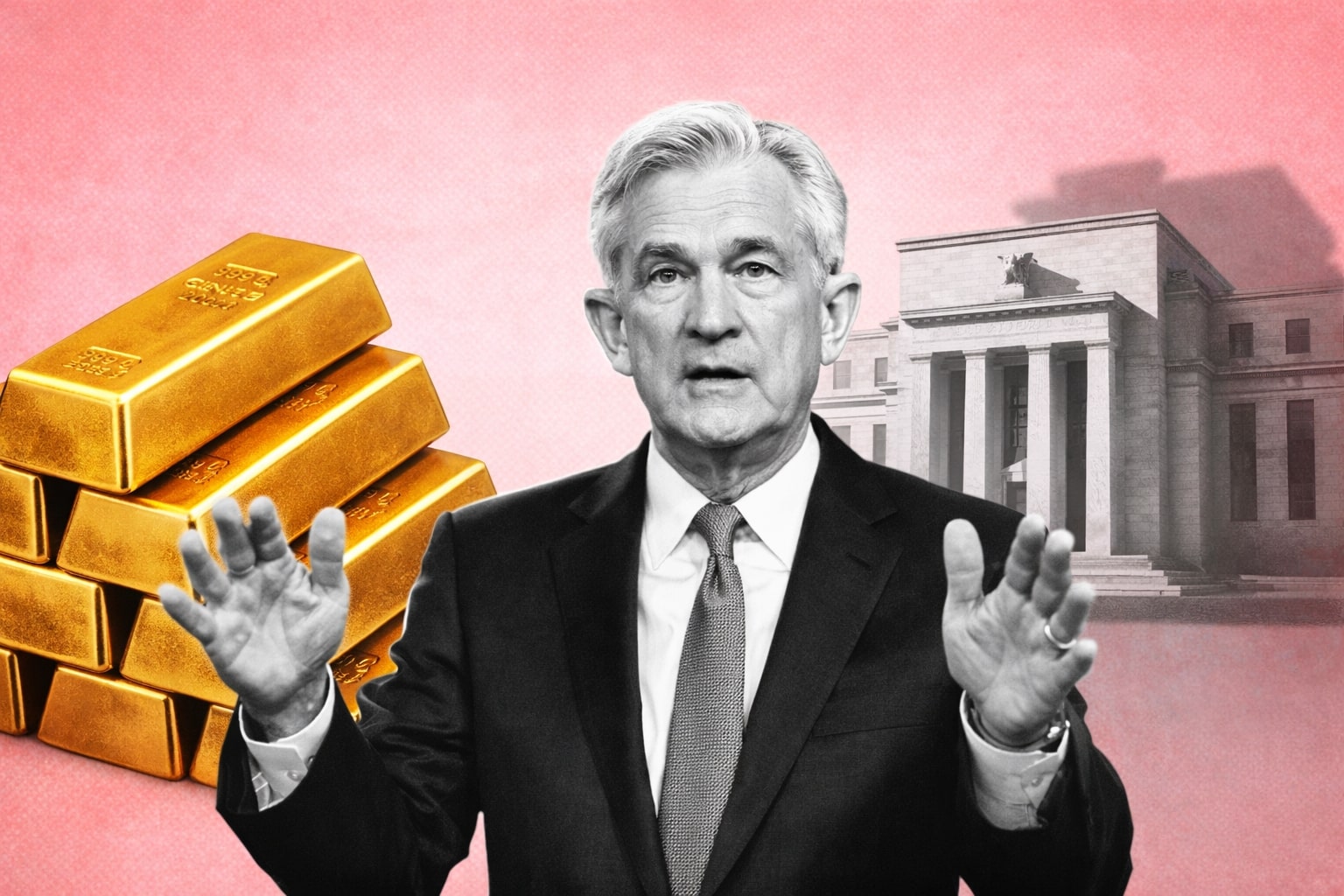
Gold Prices Under Pressure as Dollar Strengthens and US Debt Ceiling Crisis Unfolds
Investors Brace for Potential Decline in Gold Prices Amidst Strengthening Dollar and Uncertainty Over US Debt Ceiling Negotiations
Gold prices are facing downward pressure as the precious metal struggles to maintain its support levels. Currently trading around $1,986 per ounce, gold may break a key support level at $1,985 and decline towards $1,975. This bearish sentiment is driven by a wave C pattern, indicating a potential target around $1,947. The metal has already dropped below a wedge formation, confirming a top pattern and reinforcing the bearish outlook.
Analyzing the wave pattern, we can trace the progress of wave C from its starting point at $2,047.99. This analysis allows us to identify various support and resistance levels that gold may encounter in its downward movement.
Based on this projection, we anticipate that spot gold may find temporary support around $2,020. However, the 100% Fibonacci retracement level at $1,975 presents a realistic target for the decline. Even if there is a bounce from the current level, it is likely to be limited to around $2,003. On the daily chart, a deep correction is taking place, with gold extending its decline towards a range of $1,939 to $1,963.
start trading>> 86% of retail CFD accounts lose money
Looking at the broader uptrend, a retracement analysis indicates a lower target zone from $1,843 to $1,897. This suggests that gold may experience further downside pressure in the near term. Currently, spot gold is holding its ground at $1,992.19 per ounce, but the potential for further decline remains.
Several factors are contributing to the downward trend in gold prices. Firstly, there are positive developments in the U.S. debt ceiling negotiations between President Joe Biden and Congressional Republican leaders. The possibility of a resolution to the debt crisis has increased, prompting optimism in the market and strengthening the U.S. dollar. A stronger dollar weighs on overseas demand for gold, as it becomes relatively more expensive for international buyers. Additionally, higher interest rates, which are being signaled by Federal Reserve officials, reduce the appeal of non-yielding assets like gold.
On the economic front, U.S. retail sales for April came in below expectations, but the underlying trend indicates solid consumer spending in the second quarter. Despite growing risks of a recession, consumer spending remains resilient. These factors further support the notion of a stronger U.S. dollar and a potentially weaker gold market.
Amidst these developments, it is crucial to keep an eye on the statements and actions of central banks. Raphael Bostic, President of the Atlanta Fed, emphasized the need for the Federal Reserve to maintain a strong stance against inflation, even if the unemployment rate rises later in the year. This suggests that the Fed will prioritize fighting inflation, potentially leading to further tightening measures. Currently, traders are pricing in an 85% chance of the central bank keeping rates unchanged in June.
Taking a broader view, the dollar index, which measures the value of the greenback against major currencies, remains firm. This strength in the dollar puts additional pressure on gold prices, as it reduces overseas demand for the precious metal.
In terms of global economic news, Japan's economy grew by 1.6% in January-March, driven by firm private consumption and an unexpected rise in capital expenditure. This positive economic data could further strengthen the dollar and dampen demand for gold.
start trading>> 86% of retail CFD accounts lose money
While gold faces headwinds in the short term, it is essential to acknowledge the metal's historical role as a safe haven and inflation hedge. Gold has traditionally performed well during times of severe economic stress, and this trend has continued in 2023. Central banks have recognized the value of gold, with significant purchases totaling 1,136 tonnes in 2022, worth $70 billion. This departure from previous decades' trend of selling gold
is a significant indicator of the increasing appeal and recognition of gold as a diversification asset for central banks. Unlike other safe assets tied to specific issuers or governments, such as the US Dollar or US treasuries, gold offers independence and stability.
One crucial factor driving the demand for gold is the ongoing US debt ceiling crisis. The recent delay in negotiations between President Biden and Congressional Republican leaders highlights the deep divisions within the US political system. The White House aims to secure its budget and raise the debt ceiling to avoid defaulting on its debts. However, Republicans are demanding spending cuts before agreeing to raise the debt ceiling.
The International Monetary Default has warned that any delay in paying US debts would lead to a drop in credit ratings. Nonetheless, there is optimism that both sides will reach a settlement before the weekend, as they inch closer to a deal. This optimism has bolstered the US dollar, with the dollar index rising to a six-week high.
The relationship between gold prices and the US dollar is closely intertwined. Typically, the expectation of further interest rate hikes depresses gold prices as the US dollar becomes a safer haven compared to the precious metal. However, recent comments from US Federal Reserve officials, including Chicago Fed President Austan Goolsbee and Atlanta Fed President Raphael Bostic, downplayed the possibility of rate cuts. Bostic emphasized the Fed's commitment to fighting inflation, even if the unemployment rate rises. These comments have contributed to the strengthening of the US dollar and the downward pressure on gold prices.
Market participants are currently pricing in a 78.6% chance of the Federal Reserve maintaining interest rates in June, according to the CME FedWatch tool. However, while the short-term outlook for gold suggests further consolidation as economic data unfolds, the overall outlook remains bullish. Factors such as dollar weakness, peaking Fed interest rates, and continued demand from central banks support a positive outlook for gold.
It's worth noting that gold has historically demonstrated its resilience during times of economic turmoil. During the 2008 financial crisis, while the S&P 500 experienced a significant drop, gold recorded a 24% increase. This occurred as the Federal Reserve implemented quantitative easing, leading to increased money supply and driving up the relative value of gold.
However, with uncertainties surrounding monetary policy and gold prices near record highs, it is crucial to consider the risks associated with a gold trade. As the US debt ceiling crisis nears a resolution and the US dollar strengthens, gold prices may face further downward pressure in the near term.
In conclusion, the outlook for gold prices suggests a potential decline driven by a wave C pattern and the strength of the US dollar. The ongoing US debt ceiling crisis and comments from Federal Reserve officials are contributing to the bearish sentiment surrounding gold. While gold has historically served as a safe haven and inflation hedge, the current market conditions warrant caution for investors considering a gold trade. As the situation evolves, it is essential to monitor economic developments, central bank actions, and the progress of the US debt ceiling negotiations to make informed investment decisions.
Read More
-
Salesforce Stock Price Forecast - Why CRM Stock Around $238 Still Discounts Agentforce And 34% FCF
14.01.2026 · TradingNEWS ArchiveStocks
-
XRP Price Forecast - XRP-USD Holds Above $2 as Luxembourg EMI and CLARITY Act Cut Regulatory Risk
14.01.2026 · TradingNEWS ArchiveCrypto
-
Oil Price Forecast: WTI Oil Breaks Out Toward $62 as Brent Jumps Above $66 on Geopolitical Risk
14.01.2026 · TradingNEWS ArchiveCommodities
-
Stock Market Today - Dow Slides to 48,977 as BAC, WFC Sink and Gold Blasts to $4,621
14.01.2026 · TradingNEWS ArchiveMarkets
-
GBP/USD Price Forecast - Pound Holds 1.34–1.35 Band As Fed Independence Shock Offsets Strong US Numbers
14.01.2026 · TradingNEWS ArchiveForex



















